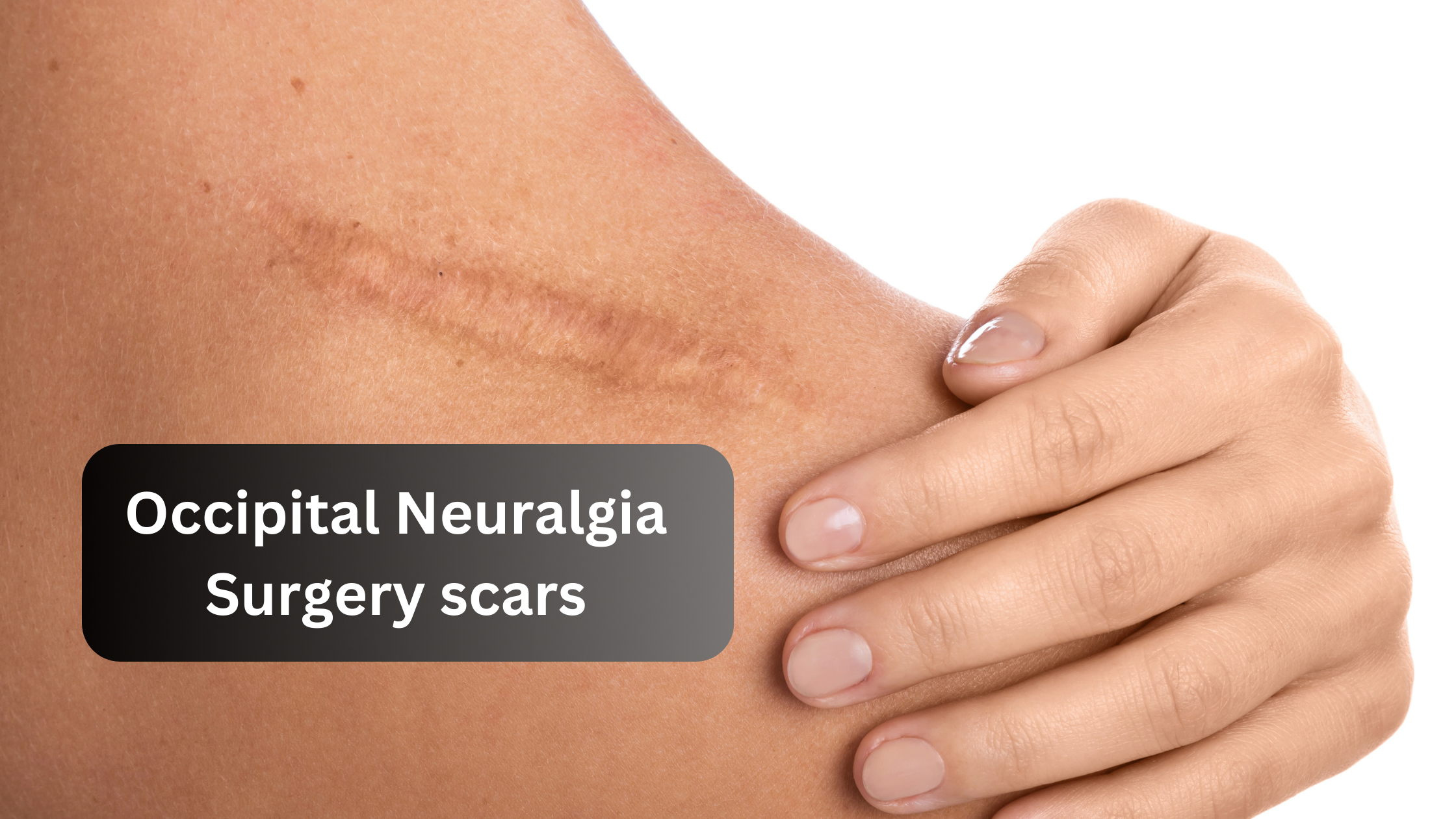
Introduction: This post is a comprehensive guide for people who want to know everything about Occipital Neuralgia surgery scars. We have tried our best to include every detail that will help a person to handle the scar issue in a better way and work to fade it away.
Occipital neuralgia surgery cures chronic pain; however, as any medical operation would, it results in scarring. Scars are a natural and normal phenomenon during healing and treatment but their proper management will enhance their appearance and decrease discomfort. Today, we’ll highlight tips and measures you should take when caring for a scar after surgery and things you should know about Occipital Neuralgia Surgery scars.
What is needed to know about Surgery Scars?
Occipital neuralgia surgery includes procedures that require cutting, through incisions at the back of the head, of the areas where the occipital nerves are concentrated. As these areas take different time to heal for each patient, the scar that remains behind can again be dissimilar in size and texture. Although scars can become less obvious as years pass, they must be treated with care, or hypertrophic scarring or keloids might occur.
First Steps in Taking Care of Scar Post-Surgery
1. Follow the Instructions of Your Surgeon
After the surgery, your doctor will advise on how best to take care of the wound caused by the surgery. Scrubbing and sneezing aggressively tend to worsen the condition of the scar tissue.
2. Keep the Area Clean and Dry
The wound must be cleaned as soon as it is possible in the first days after surgery to avoid infection. Do as your surgeon instructs when cleaning the area, which will usually just require soap and water, and then avoid the area getting wet.
3. Avoid Scratching or Picking the Scar
This is usually evident in the form of itch and this is bad. You should not scratch the wound since this will lead to the formation of scar tissue and may lead to infection. Just applying an anti-itch cream or providing the affected skin area with a cold compress is enough to soothe the itching without interfering with the skin’s healing.
4. Use Protective Dressings
With deep or large incisions, the surgeon may advise that what is done is covered using a dressing. Among all the types of silicone products, the rolls of silicone sheets are useful in minimizing the formation of scars as well as aiding in the healing process.
Long-Term Scar Management Strategies
1. Massage the Scar Area
After approximately a week has passed post-operation and your surgeon gives his or her consent, the use of the fingers to gently rub the scar will diffuse the tightening of collagen fibers that form. Perhaps, this can make the characteristic scar flat and blend with other skin structures. For additional benefit, apply a Vitamin E or silicone-based cream.
2. Apply Scar Reduction Creams
There are many types of creams available without prescription that may be used to minimize the look of a scar. This is because products containing silicone, onion extract, or hyaluronic acid are especially good. Use them often to maintain the softness of the scar as well as nourish the skin.
3. Protect Your Scar from Sun Exposure
He or she needs to know that scars are sensitive to sunlight, and in case one is exposed to the sun, they become dark and thick. Ensure you protect the scar area by using sunscreen cream with high SPF whenever you are going out for a sunlit place even if it will not take quite some time. Or wear headgear or clothing over the area.
4. Consider Laser Therapy or Microneedling
There are procedures like laser therapy or microneedling that could be applied. These treatments are based on the enhancement of collagen deposition and altering the feel of scar tissue. For more specific information and procedures you can mention a dermatologist or a cosmetic surgeon.
5. Stay Hydrated and Maintain a Healthy Diet
Other internal aspects such as water intake as well as feeding patterns largely influence the time taken for the scar to heal. Stay hydrated and take lots of foods that contain vitamins A C and E since they enhance skin regeneration and healing.
When to Seek Medical Advice
Although many scars are without complications on a larger scale, some may need the attention of a doctor.
-
Thicker or raised scar area both in length and width
-
Width of the scar that is increased over normally anticipated measurements (possible keloid or hypertrophic scar development)
-
Any form of itching or other pain or irritation that continues to be a problem.
Emotional Impact of Scarring
Some patients may develop a psychological problem because of a scar, mostly if the scar is located in a sensitive area of the face. As much as everyone is more concerned with the health of the body, they should not rule out the well-being of the heart. Seeing your healthcare provider or a counselor like those who you can consult at Migraine Surgery Speciality Center could assist you in taking care of the scar after surgery. They also handle the cases of decompression migraine treatment.
Wrapping Up
Occipital neuralgia surgical scars need to be dealt with carefully with proper dressing, scar minimization procedures, and time. If you continue to follow your surgeon’s instructions and integrate these long-term methods of managing your scars such as through massage, use of sunscreen, and scar Gel, your scars can appear and feel much better. It is important to remain active with your care so you get the best result while also giving your body the chance to recover.